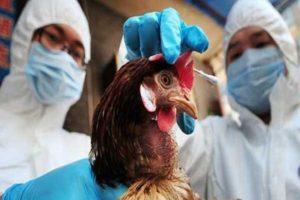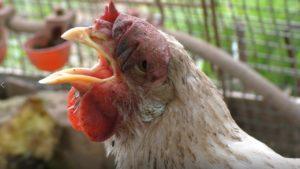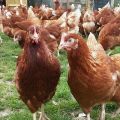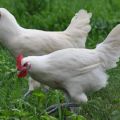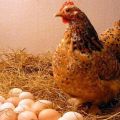For what reasons do domestic chickens die and what to do about it
Breeding chickens is associated with some difficulties. The owners are counting on an increase in the number, on a constant replenishment of nests with eggs, but expectations are not always met. When keeping chickens, infection of all layers is possible, diseases of some individuals. If the number of chickens is declining, then it is important to quickly understand why layers begin to die. After determining the reason, they plan how to help them, what to do to avoid a similar situation.
Main reasons
When the laying hen is dead, they analyze the situation and find out the reason that became the basis of the outcome. The loss of one chicken can be both one-time and regular.
There are the main reasons why the number of chickens in the hen house is decreasing:
- lack of vitamins, minerals, poor nutrition;
- insufficient care, characterized by freezing or overheating of the bird;
- poor conditions of detention (insufficiently fortified chicken coop);
- rodent attacks;
- infection with various diseases.

Improper nutrition
Eating disorders is one of the most common care mistakes. For growth and development, chickens need vitamins. Poor quality, dirty food, lack of drinking in sufficient quantity, and irregular feeding can become the cause of death.
Experienced poultry houses purchase feed from trusted buyers, control the quality and plan the ration in advance.
Chickens need a balanced diet with enough minerals and organic matter.

Unsuitable conditions of detention
The chicken coop is equipped with light, heat is conducted, and the ventilation system is taken into account. To heat the chicken coop, special heating devices are used; stationary lamps are distributed for lighting. If the chicken coop is not insulated enough, then in winter the hens can freeze, weaken, and then die.
A poorly built barn can be damp in summer. Mold growth in corners often increases the risk of disease. Chickens become lethargic, weak, and lose their appetite.

Diseases
The main reason for the death of chickens is infection with infectious diseases. Infections are carried by rats, mice, insects. Layers are prone to some pathologies that develop in the presence of risk factors. The danger of infection is that after the death of one chicken, the death of the next one may follow.

If chickens die in large quantities
Mass mortality of chickens begins after the appearance of one infected individual and its subsequent death. At this stage, the owners are trying to quickly find out which disease caused the death of the individual, in order to take preventive measures and take treatment measures.
Pasteurellosis
The infection, called avian cholera, is caused by rods. The risk group is called young individuals with unformed immunity. The reason for the development of cholera is often jumps in temperature, high humidity.
Infection occurs in one of the ways:
- through drinking, food;
- after contact with a sick bird;
- after an insect bite.
Sick birds are destroyed, healthy individuals are given antibiotics for a general course of at least 14 days.

Newcastle disease
A viral disease characterized by concomitant pneumonia, damage to internal organs. The virus is especially active in autumn and summer, is transmitted from a sick individual, spreads through the clothes of a person caring for chickens, through food and drink. Symptoms:
- temperature rise up to + 43 degrees;
- lethargy, decreased activity;
- the appearance of conjunctivitis;
- diarrhea;
- the appearance of a tremor, developing into paralysis.
Only strong individuals with a well-developed immunity survive. According to statistics, 90% of sick chickens die. Newcastle disease develops rapidly, reaching its peak in 3-5 days.

Coccidiosis
Without appropriate measures, this disease can completely wipe out all chickens in 7 days. It is a parasitic disease that affects the intestines. Violation of the rules for care, feeding with poor-quality contaminated feed can become provocateurs of the appearance of the parasite. Severe forms of the disease do not respond to treatment.
First, sick chickens are separated from healthy chickens, then therapy is carried out. If you start treatment in a timely manner, then the likelihood of recovery increases.

Ascariasis
The causative agent of the disease is a parasite that infects the intestines. In a few days, the mortality of chickens increases 3 times. Worms are the most common type of infectious agent.
After infection, the first symptoms appear only 7-8 days. When chickens are affected, growth retardation is a characteristic sign of ascariasis. Treatment begins with the resettlement of the sick, disinfection, taking antibiotics and probiotics.

If the birds die one by one
There are diseases that are susceptible to chickens at risk. Young birds under 3 months of age are considered a risk group. The death of chickens one by one can reduce the number, lead to the development of other diseases.
Information! The sick bird is immediately removed from the common hen house.
Abdominal dropsy
Some birds begin to experience difficulties in the development of internal organs. An increase in the abdominal cavity indicates the development of dropsy. This means that the abdominal cavity is filled with fluid due to impaired kidney or liver function. The situation is corrected by introducing a sterile needle and then pumping out the liquid.

Bronchopneumonia
After hypothermia, chickens fall ill with bronchopneumonia one by one. The disease is diagnosed by wheezing, breathing problems, inability to consume food. The disease leads to the death of the bird only if therapeutic measures are not taken. You can relieve the chicken of symptoms with a course of antibiotics.

Salpingitis
Layers are prone to inflammation of the oviduct. The reasons are different:
- violation of conditions of detention;
- avitaminosis;
- transferred infections.
When the oviduct falls out of the cloaca, the chicken cannot be saved. But, if treatment is started early, then the laying hen will recover after a course of antibiotics and the use of local drugs.
Information! One of the signs of salpingitis is obesity in the laying hen.

For what reason can chickens die?
Newborn chicks are sensitive to changes in temperature, react to changes in lighting and need fortified feeding. If they die 1-5 days after hatching, then the reason may be non-compliance with the temperature regime.
In addition, there are other causes of death that can be corrected in advance:
- too abrupt change in air temperature, as well as increased air temperature;
- indigestion due to dietary errors;
- atrophy of the stomach muscles due to a lack of a solid component in food;
- lack of vitamins;
- pathology of internal organs;
- poisoning;
- infectious diseases transmitted from sick birds, if chickens are kept together with adults.
Poultry farmers identify the most dangerous periods during which chickens may die:
- from 1 to 5 days of existence;
- from 20 to 25 days;
- from 35 to 40 days.
How to diagnose the problem
It is possible to determine the cause of the death of several chickens or one bird by characteristic signs. Despite the fact that each disease has distinctive features, the general symptoms are expressed in the same way:
- refusal to eat, lack of appetite;
- refusal to drink or excessive drinking, avidly;
- lethargy, lameness, an increase in some parts of the body;
- impaired coordination of movements, tremors of some parts of the body.
Some diseases provoke an increase in body temperature, a change in the shade of the integument, the condition of the ridge: its blue discoloration or whitening.
To determine the cause, they take chicken droppings and take them for diagnosis to laboratory assistants from the veterinary clinic. If the bird dies for no apparent reason, it is sent for an autopsy to prevent the disease of the entire flock.

Treatment and prevention of death
Carrying out therapeutic measures begins after determining the cause. Many diseases require the appointment of a course of antibiotics and antiparasitic drugs. They are added to drinks, mixed with food:
- antibiotics (Tetracycline, Biomycin, Levomycin);
- antiparasitic agents (Levomizol, Mustang insecto).
Many owners are conducting therapy using folk remedies. A weak solution of manganese is added to drinking water. Bunches of tansy and chamomile are hung along the perimeter of the chicken coop.
Vaccination helps to minimize the risks of developing certain diseases. Vaccinations are performed by invited veterinarians. Adding liquid solutions to food or drink is carried out independently.

Disinfection of the chicken coop is considered a prerequisite for caring for infected birds. Changing bedding, cleaning feeders, destroying the nests of infected layers.
Preventive measures are those that are aimed at preventing diseases, the development of conditions that can provoke the appearance of parasites:
- monitor the purity and quality of feed, drink;
- use clean feeders and drinking bowls;
- natural vitamins are added to food: herbs, some berries;
- carry out regular cleaning of the chicken coop with a change of bedding;
- while walking, make sure that the chickens are away from chemicals, do not come into contact with pets.
Chickens die for various reasons. To carry out competent treatment, find out the cause of the disease and eliminate risk factors.
